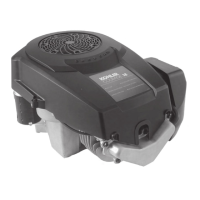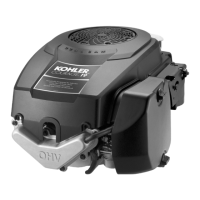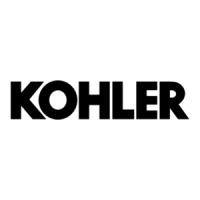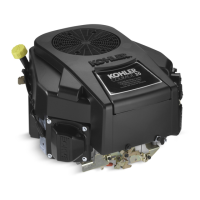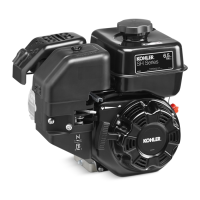5.2
Section 5
Fuel System and Governor
Fuel System Troubleshooting Guide
Test Conclusion
1. Check for the following:
a. Make sure the fuel tank contains clean, fresh,
proper fuel.
b. Make sure the vent in fuel cap is open.
c. Make sure the fuel valve is open.
2. Check for fuel in the combustion chamber.
a. Disconnect and ground spark plug lead.
b. Close the choke on the carburetor.
c. Crank the engine several times.
d. Remove the spark plug and check for fuel at
the tip.
2. If there is fuel at the tip of the spark plug, fuel is
reaching the combustion chamber.
If there is no fuel at the tip of the spark plug, check
for fuel flow from the fuel tank (Test 3).
3. Check for fuel flow from the tank to the fuel pump.
a. Remove the fuel line from the inlet fiing of
the fuel pump.
b. Hold the line below the boom of the tank.
Open the shutoff valve (if so equipped) and
observe flow.
3. If fuel does flow from the line, reconnect line and
check for faulty fuel pump (Test 4).
If fuel does not flow from the line, check for
clogged fuel tank vent, fuel pickup screen, shutoff
valve, and fuel lines.
4. Check the operation of fuel pump.
a. Remove the fuel line from the inlet fiing of
the carburetor.
b. Crank the engine several times and observe
flow.
4. If fuel does flow from the line, check for faulty
carburetor. (Refer to the "Carburetor" portions of
this section.)
If fuel does not flow from the line, check for
clogged fuel line. If the fuel line is unobstructed,
the fuel pump is faulty and must be replaced.
Fuel Filter
Some engines are equipped with an in-line fuel filter.
Periodically inspect the filter and replace when dirty.
Replacement is recommended annually or every 100
hours. Use a genuine Kohler filter.
Fuel Line
These engines use low permeation rated fuel lines,
certified to comply with California and U.S. EPA
evaporative emission requirements. Fuel lines that do
not meet these requirements may not be used. Order
replacement hose through a Kohler Service Center.
Fuel Pump
Some engines are equipped with an optional pulse
fuel pump. See Figure 5-1.
Operation
The fuel pump has two internal chambers separated
by a diaphragm. The air chamber is connected to the
engine crankcase by a rubber hose. The fuel chamber
has an inlet from the fuel tank, and an outlet to the
carburetor. The inlet and outlet each have an internal,
one-way check valve.
Alternating negative and positive pressures in the
crankcase activate the pump. When the piston moves
upward in the cylinder, negative pressure (vacuum)
is created in the crankcase and in the air chamber of
the pump. The diaphragm flexes toward the negative
pressure, and the suction draws fuel past the inlet
check valve, into the fuel chamber. Downward
movement of the piston causes a positive pressure
in the crankcase and air chamber, pushing the
diaphragm in the opposite direction, puing pressure
on the fuel. The inlet check valve has now closed, so
the fuel is forced past the outlet check valve, to the
carburetor.
Repair
Pulse fuel pumps are not serviceable and must be
replaced when faulty.
Removal
1. Disconnect the inlet, outlet, and pulse lines
from the fuel pump. Mark the lines for proper
reassembly.
2. Remove the hex flange screws aaching the fuel
pump.
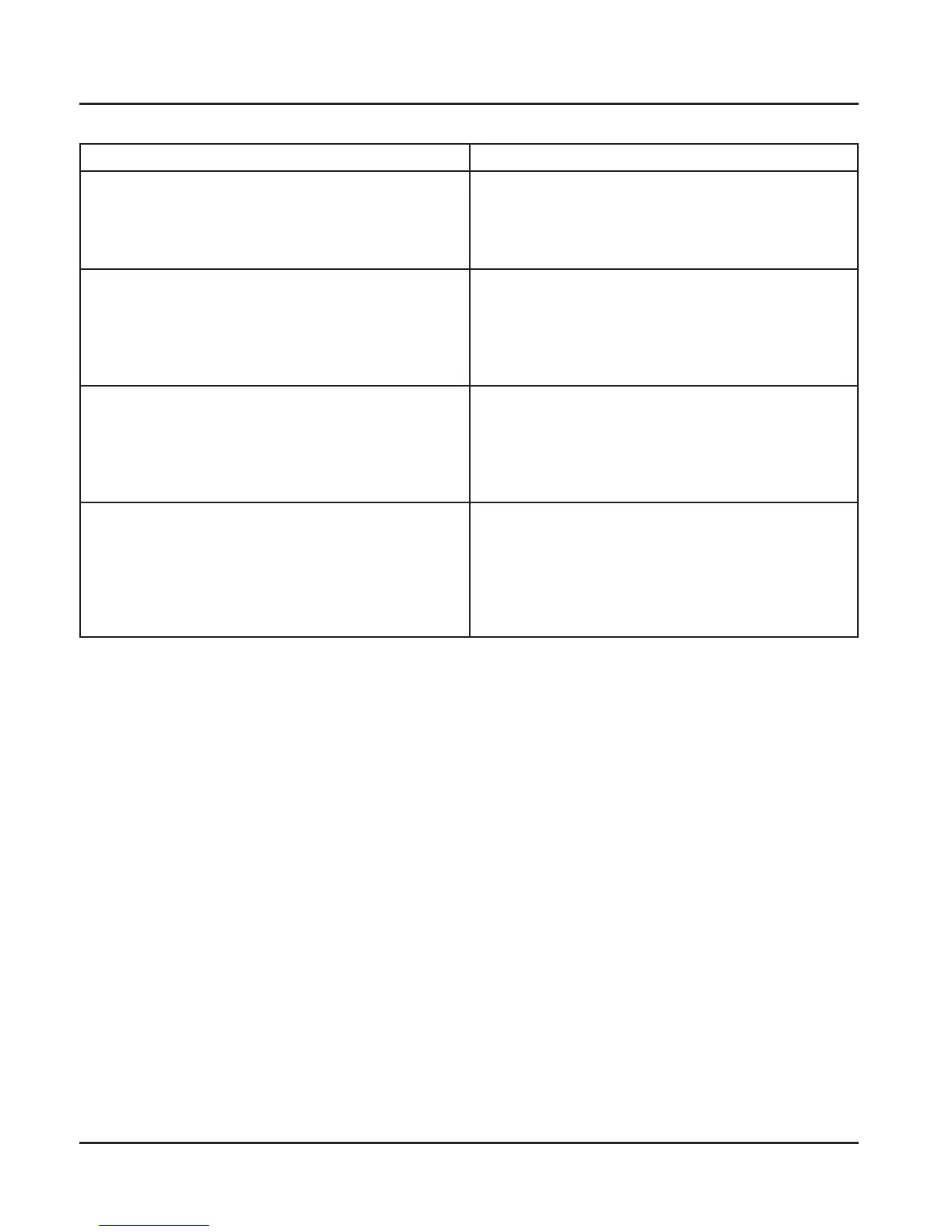